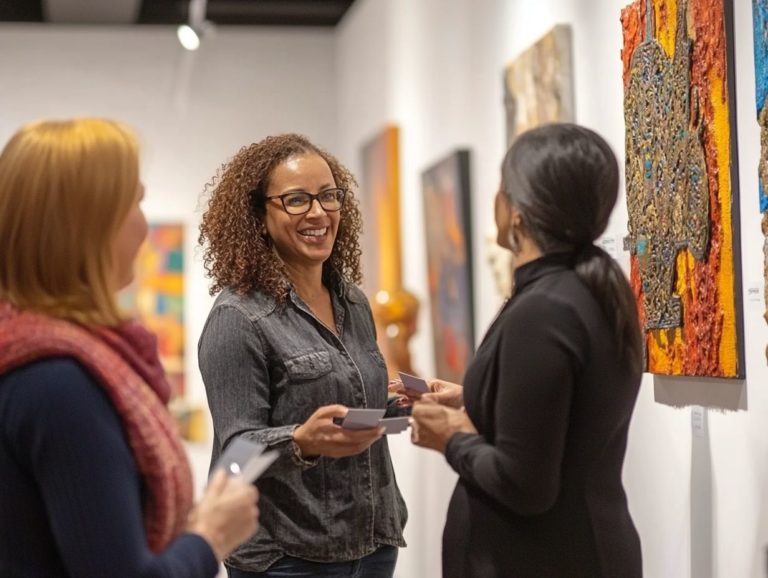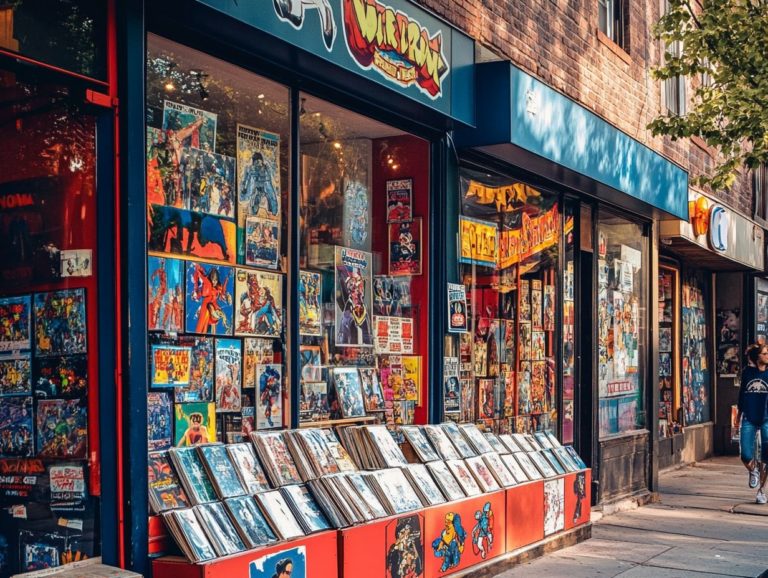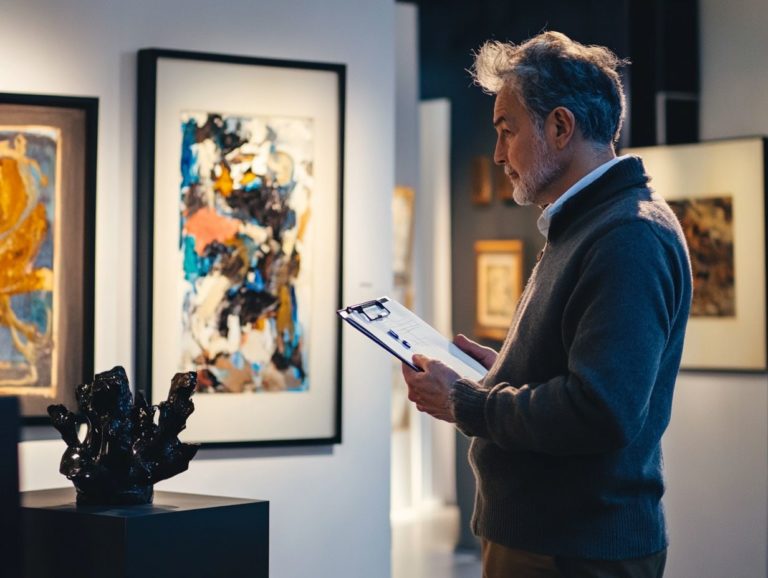The Intersection of Art and Investment: A Guide
Art has always been revered for its beauty and cultural importance. Today, it also represents a compelling investment opportunity.
Dive into this guide and discover the thrilling world of art investment! Explore its historical trends, current market dynamics, and the types of artworks that can enrich your portfolio.
Uncover essential factors to consider and expert insights. Follow a clear, step-by-step approach to navigate this distinctive investment landscape.
Take time to weigh the risks and rewards of investing in art. Make sure your decisions in this creative domain are well-informed and strategic.
Contents
Key Takeaways:
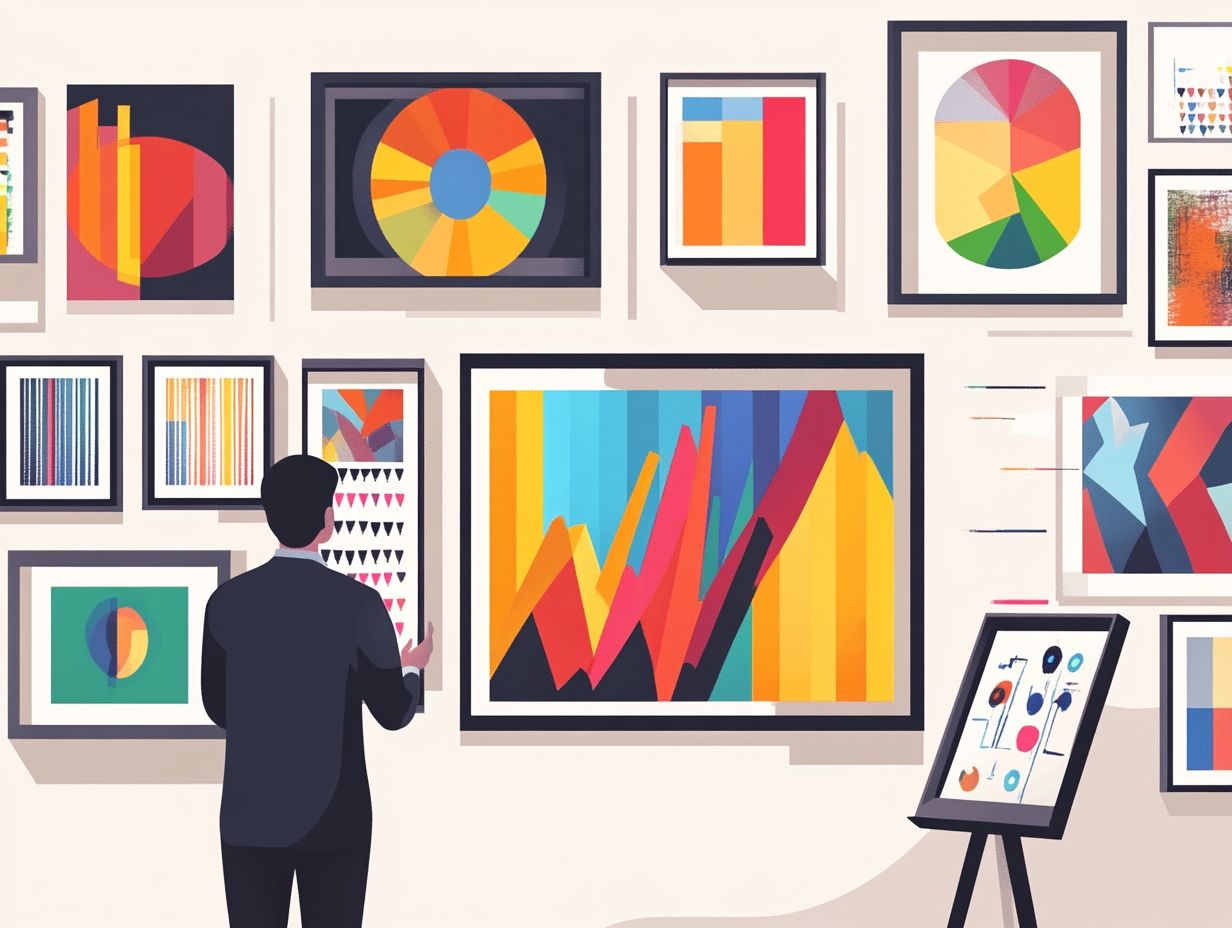
1. Art can offer high returns but requires careful consideration of market trends and expert advice.
2. Explore various art investments, from traditional paintings to modern digital art and collectibles.
3. While art investment can diversify your portfolio, it bears risks like market volatility. Always consider all factors before deciding.
Defining Art Investment
Art investment means buying art with the hope that its value will grow over time. This offers financial rewards alongside cultural enrichment.
Art has historically been a valuable asset, with masterpieces selling for staggering amounts at auctions. In today s recovering economy, art investment is becoming even more significant.
Smart investors recognize the stability that tangible assets, like art, can provide during market fluctuations. Recent trends show impressive returns from both emerging talents and established artists.
Art advisors play a crucial role in helping you identify pieces with genuine potential. The rise of online platforms has opened the art market to younger, tech-savvy investors.
You now have the chance to engage with art investment like never before, making it an exciting time to explore your collection!
The Value of Art as an Investment
The value of art goes beyond its visual appeal. It includes financial rewards, cultural relevance, and opportunities that attract diverse investors.
Today, the reputation of an artist and market trends influence how we perceive art s worth.
Understanding these dynamics is vital for you as a collector or investor. The art scene is rapidly evolving with new artists and platforms emerging.
Historical Trends and Current Market
Historical trends in the art market reveal engaging connections between artistic movements and economic conditions. These factors influence how you buy and sell art today.
From classics by Picasso to modern digital expressions, understanding these shifts provides invaluable insights for art collectors.
The market is evolving, with growing interest in NFTs and blockchain technology. Traditional auction houses are adapting to these new trends.
Historical movements like Impressionism mirror societal changes. Today, you seek not only aesthetic pleasure but are also aware of socio-economic implications.
Emerging artists from diverse backgrounds are gaining recognition for their unique perspectives, highlighting a shift towards inclusivity.
Street artists like Banksy are redefining value and ownership, creating a landscape rich in cultural commentary and investment potential.
Factors to Consider Before Investing in Art
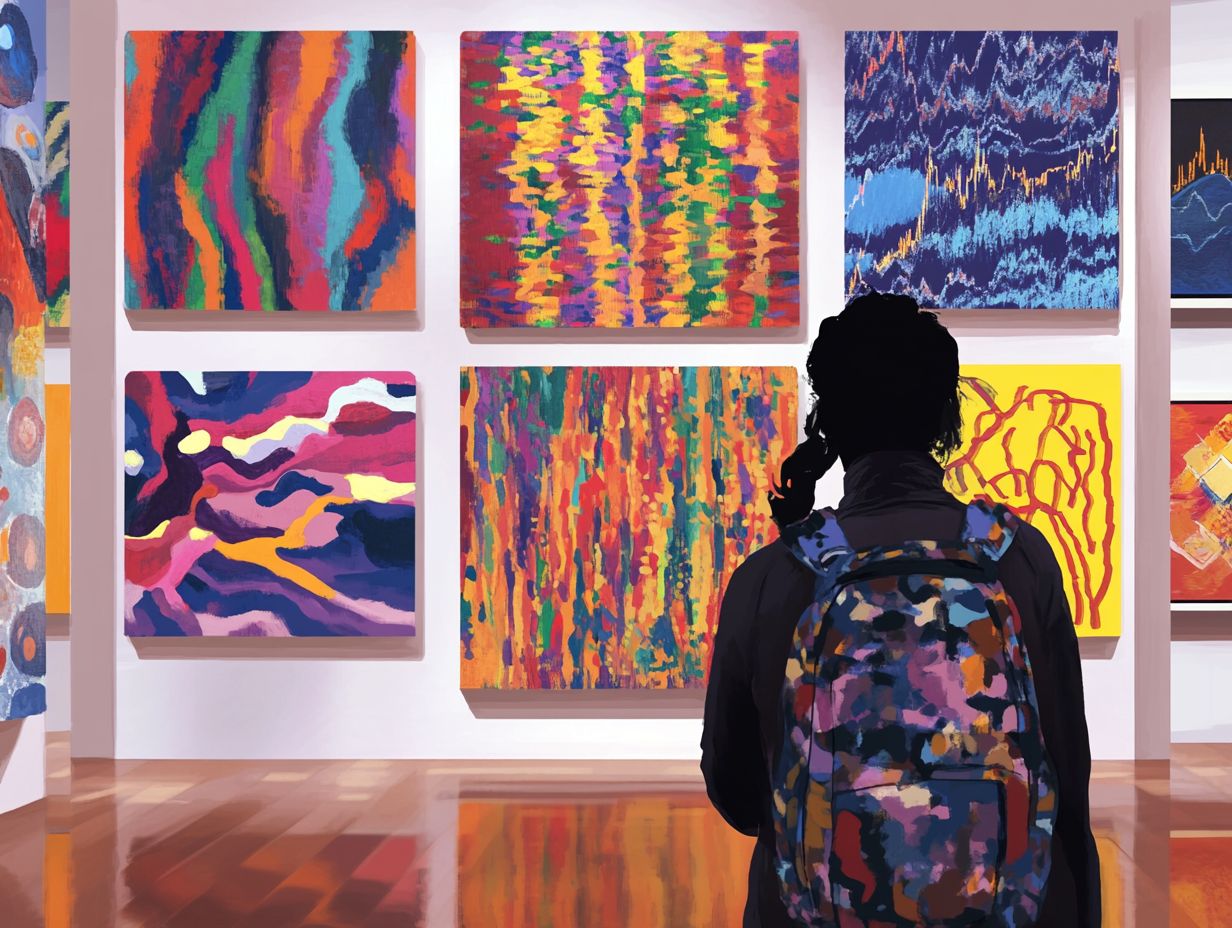
Before you invest in art, it s essential to carefully evaluate a range of factors to reduce investment risks. This evaluation can enhance your potential returns.
Art valuation isn t just a simple task; it involves a deep understanding of an artwork’s provenance, the reputation of the artist, and its standing within the current art market.
You should take into account your personal financial goals and the risks tied to market fluctuations. It s also important to seek the help from professional art advisors to make informed investment decisions that align seamlessly with your overall portfolio strategy.
Expert Advice and Tips
Seeking expert advice is invaluable when navigating the complexities of art investments. Well-informed tips can give you a significant edge in the art market.
Engaging with experienced art advisors can help you identify unique pieces that align with emerging art trends. They also provide insights into effective investment strategies and financial tools designed for managing your art portfolio.
Leveraging their expertise will enable you to make prudent decisions, especially in volatile market conditions.
As a potential investor, consider the intersection of art and technology. Digital platforms and online auctions are becoming increasingly prominent.
These avenues not only expand your access to a diverse array of artworks but also offer analytical tools that are essential for assessing the value and market dynamics of various pieces.
Staying updated on current trends through reputable art publications and attending galleries and exhibitions can further enhance your understanding of the market landscape.
Collectors who take the initiative to educate themselves and adapt to new technologies can significantly strengthen their investment strategies.
Types of Art Investments
Art investments present a myriad of opportunities, each with its own unique advantages and challenges tailored to various investment profiles, spanning from contemporary pieces to digital art.
High-value artworks, often referred to as blue chip art, offer a stable investment path with a history of reliable returns.
The rise of fractional ownership has transformed the landscape of art investments, enabling collectors like you to diversify your portfolio without the burdens of direct ownership complexities.
Exploring Different Options
Don t miss out on the chance to explore exciting art investment options that can elevate your portfolio! This includes fractional ownership, art auctions, and online marketplaces tailored to meet diverse investor needs.
With fractional ownership, you can join forces with other investors to co-own high-value pieces, dramatically lowering the entry barrier to prestigious artworks.
Online marketplaces like Rarible and OpenSea have democratized access to art investments. They allow you to delve into a myriad of investment opportunities across different art genres and movements.
These innovative approaches not only empower you as a retail investor but also foster a vibrant environment where various art forms can be traded, appreciated, and valued in unique ways.
However, it s essential to consider the risks tied to fluctuating market trends in both auctions and online platforms.
For example, while auctions can offer excitement and the potential for high returns, they can also be unpredictable, sometimes leading you to overpay for a piece. Conversely, while online marketplaces provide the convenience of wider access, they may also feature less established artists, raising concerns about authenticity and investment stability.
Balancing these advantages and disadvantages is crucial for anyone, including you, who is contemplating a venture into this evolving art investment landscape.
How to Invest in Art
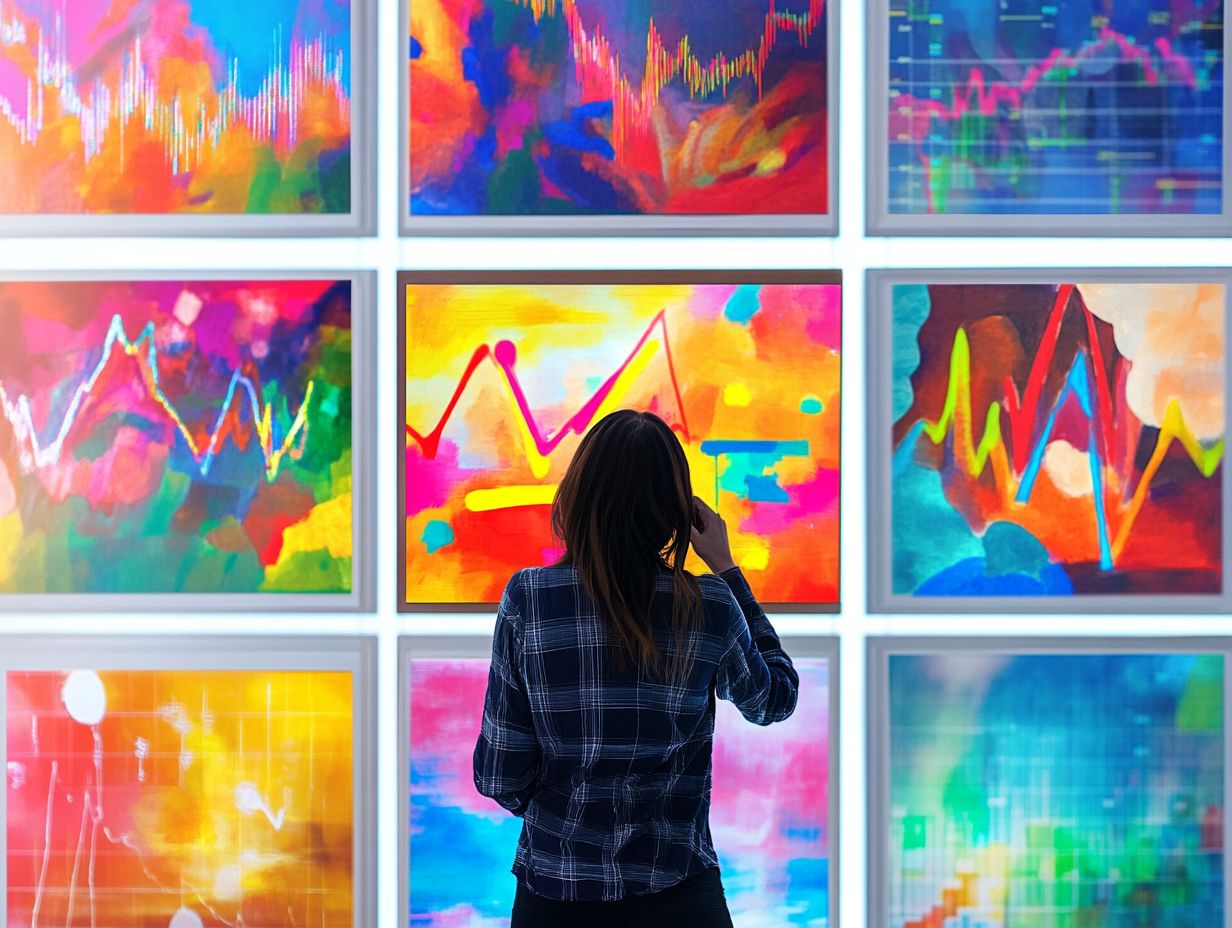
Investing in art can be exciting and rewarding! Start your journey with a structured approach by understanding art valuation for investors to empower you in making informed decisions while cultivating a robust art portfolio that promises substantial financial returns over time.
Your journey into art investment begins with thorough research into art valuation and market analysis. This foundational work should be complemented by consultations with art advisors, who can help you pinpoint potential high-value pieces.
As new art technologies emerge, it s essential for you to stay abreast of trends that influence art circulation and market dynamics. This ensures you maximize the effectiveness of your investments.
Step-by-Step Guide and Best Practices
Adopting best practices in art investment can significantly enhance your experience and potential returns. Following a collector’s guide is key to your success, ensuring you follow a well-defined, step-by-step approach.
Engage with art professionals and attend exhibitions to gain critical insights into current trends and valuation techniques. This will allow you to make informed and strategic decisions.
Understand market dynamics and network within the art community to refine your investment strategies. Staying relevant and adaptable in a shifting landscape is crucial.
Learn from seasoned investors and seek mentorship to cultivate a nuanced perspective on various art genres and emerging artists.
Conduct comprehensive research into market history, artist backgrounds, and recent sales trends. This is vital for making educated choices.
Participate in workshops and panel discussions at galleries or art fairs to broaden your understanding and foster valuable connections.
Keep an eye on online platforms that track art sales and artist recognition for a competitive edge.
Ultimately, the blend of diligent research, robust networking, and active engagement within the art scene will give you the power to navigate the challenges of investing in art with confidence.
Risks and Rewards of Art Investment
Grasping the nuances of art investment its risks and rewards is key for making informed decisions. The allure of financial gains can easily be obscured by market volatility.
While high-value artworks and distinctive pieces have the potential to deliver impressive returns, the risks associated with economic downturns and shifting art trends require a thoughtful approach. Consider diversification strategies within your art portfolio to mitigate those risks and ensure your investments remain robust in the face of market fluctuations.
Weighing the Pros and Cons
Weighing the pros and cons of art investment is crucial as you navigate the complexities of this unique asset class, especially in a constantly evolving art community.
While some artworks have appreciated significantly over time, making them enticing alternative investments, it is vital to recognize that not every piece will rise in value or retain its worth during economic shifts.
Engage with reputable galleries and auction houses to enhance your experience. This often necessitates a solid understanding of the art’s provenance, which is the history of ownership of a piece of art, condition, and potential cultural impact.
The financial dynamics of the art market can be unpredictable. Therefore, rigorous research and strategic planning are essential for you to successfully harness both the aesthetic and monetary benefits of art investment.
Frequently Asked Questions
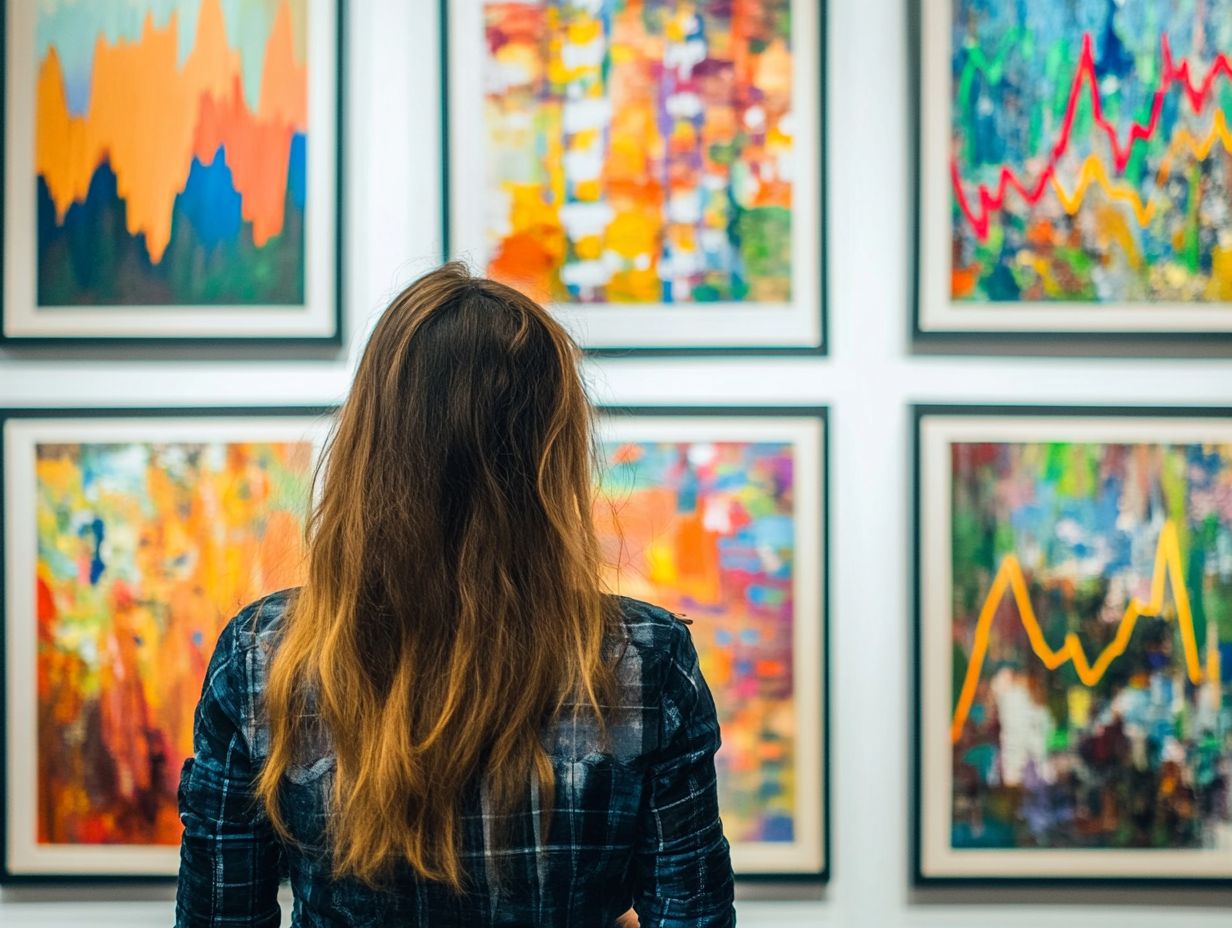
What is the intersection of art and investment?
The intersection of art and investment is the overlap between the two worlds of art and finance. It involves the concept of investing in art to potentially generate financial returns while also appreciating the aesthetic and cultural value of the artwork, but it’s crucial to be aware of understanding the risks of art investments.
Why is investing in art gaining popularity?
Investing in art has become more popular in recent years due to the potential for high returns, the ability to diversify one s investment portfolio, and the enjoyment of owning and displaying valuable artwork.
How can one start investing in art?
You can start investing in art by educating yourself about the market, establishing a budget, and seeking advice from art consultants or financial advisors who specialize in art investments. It is also important to understand the risks and potential rewards associated with investing in art.
What are some factors to consider when investing in art?
Important factors to consider when investing in art include the artist’s reputation and market demand, the condition and rarity of the artwork, and the overall health of the art market. It is also crucial to understand the costs associated with owning and maintaining artwork, such as insurance and storage fees.
Is investing in art a long-term or short-term investment?
Investing in art can be both a long-term and short-term investment. Some people choose to hold onto art for many years, while others may buy and sell art more frequently. It ultimately depends on your goals and strategies as an individual investor.
Are there any risks associated with investing in art?
Investing in art can be thrilling, but it comes with risks. The art market can change quickly, and people often have different opinions on what art is worth.
There s also a chance you might buy counterfeit or inauthentic pieces. Thorough research is essential before diving into this colorful investment world.

